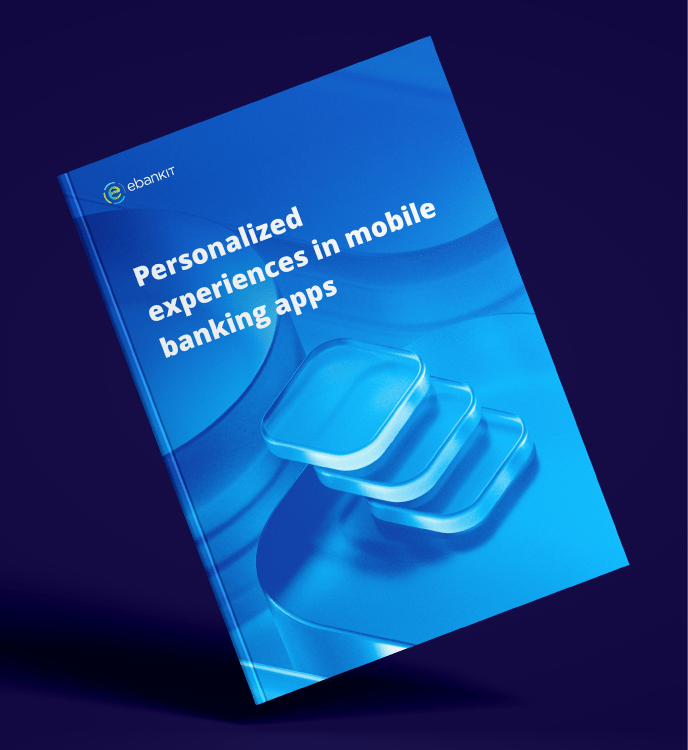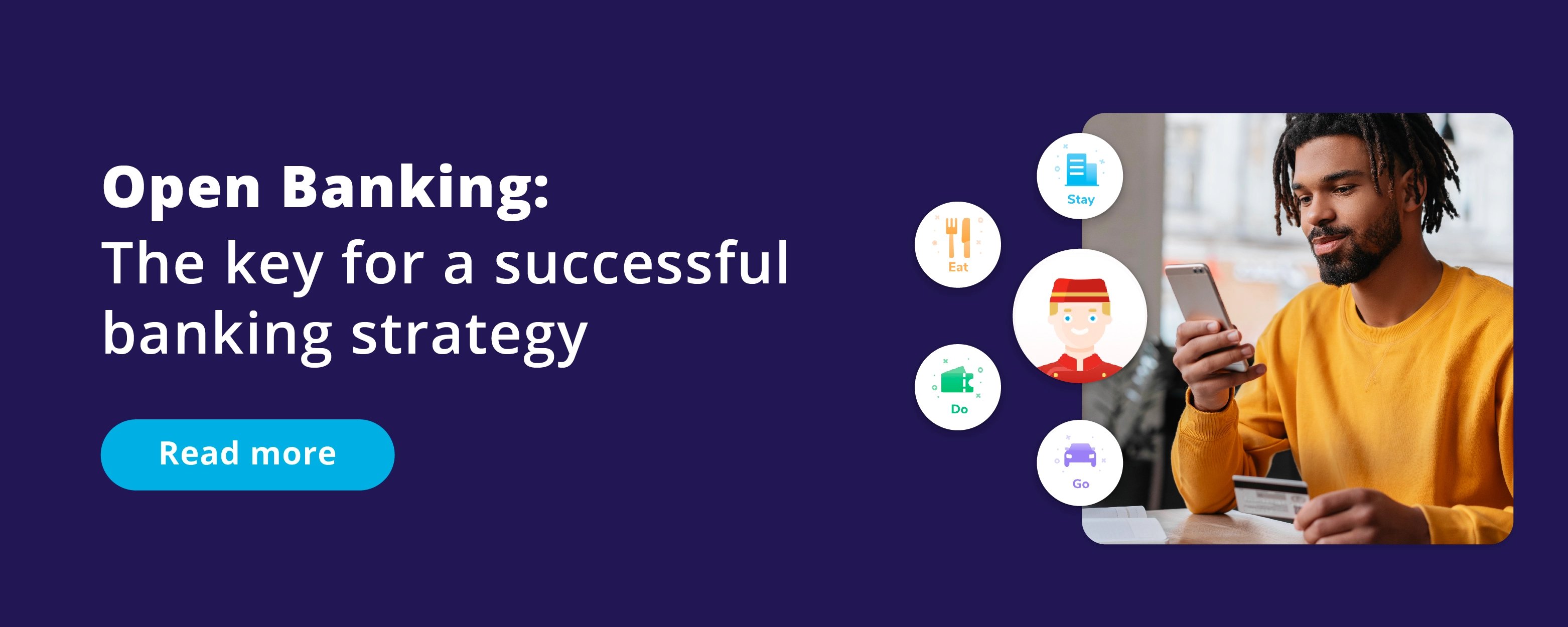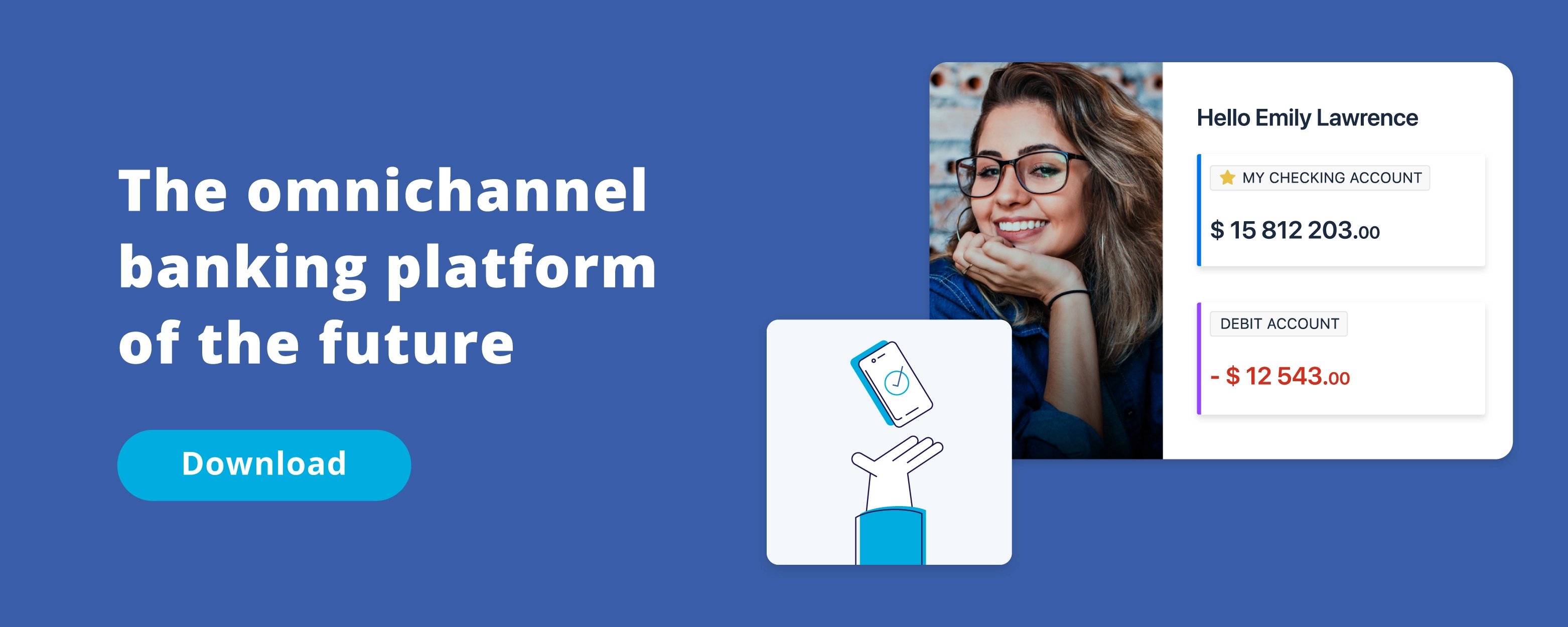Maximizing efficiency with digital banking: streamlining financial operations
Digital banking encompasses the convenient and efficient practices of both online and mobile banking. With online banking, customers can access their bank’s features through a computer system using the bank’s website. Mobile banking software, on the other hand, allows customers to access the same banking services and products through their smartphones or tablets anywhere they need to.
3 in 4 Americans (78%) prefer banking via a mobile app or website to banking in person.
- Forbes Advisor U.S. Consumer Banking Statistics study, 2023
Traditional banking methods have lost their appeal in recent years as digital banking has gained popularity. The convenience and utility of digital banking allow customers to access their accounts and perform various transactions at any time and from any location.
It is important to note that online banking is not just limited to savings accounts. Many online banks are now offering a wider range of options for banking products and services. Whether checking their account balances, transferring funds, paying bills, or even applying for loans, digital banking offers a wide range of services that make managing finances easier and more efficient.
The evolving landscape of digital banking: 5 approaches for customer-centricity
As neo-bank banks continue to grow, traditional banks are under pressure to accelerate their digital transformation to remain competitive. Digital-only banks have the advantage of operating on a lower-cost model, allowing them to offer services at more affordable rates. This means that customers can enjoy the benefits of digital banking without visiting a physical branch.
In today’s digital age, financial institutions must prioritize their clients’ needs above all else. Customer experience holds greater significance than ever, and for banks and credit unions to effectively adopt digital banking, customer experience must be at the forefront of their strategies.
The challenge for banks isn’t becoming 'digital' – providing value perceived to be in line with the cost – or better yet, providing value that customers are comfortable paying for.
- Ron Shevlin, Director of Research at Cornerstone Advisors, in Forbes advisor
The ebankIT Omnichannel platform offers a range of exciting financial management tools that introduce innovative and enjoyable ways for banking clients to save money and effectively manage their monthly budgets. With features like the digital concierge and gamification, digital banking platforms provide unique solutions that enhance the overall banking experience and empower individuals to take control of their finances.
1. Personalized banking with AI and Machine learning
As customer expectations continue to evolve, personalized banking is poised to become the standard in the banking industry. By leveraging AI and machine learning algorithms to analyze customer data, banks can offer tailored services based on individual preferences and behaviors. This personalized approach not only increases customer satisfaction and loyalty but also ensures that banks can deliver customized solutions that meet the unique needs of each client. additionally, Chatbots in banking provide 24/7 instant assistance, simulating human conversations for a personalized touch on online support platforms.
2. Open banking
Open banking is revolutionizing the banking industry and serving as a catalyst for innovation. This powerful tool enables lenders to gain a deep understanding of consumers’ risk profiles, leading to the creation of more lucrative loan options. With open banking, financial institutions can make data-driven decisions, resulting in greater profitability and better financial outcomes for both lenders and borrowers.
3. Mobile Banking Apps
Mobile banking apps are at the forefront of digital banking technology. These apps allow customers to perform various banking activities directly from their smartphones or tablets. With features like mobile check deposit, bill payment, account monitoring, and fund transfers, mobile banking apps provide convenience and flexibility to users on the go.
4. Full digital onboarding
By leveraging advanced technologies like KYC verification, the onboarding process becomes efficient, eliminating the need for physical documentation and reducing time and effort for customers and financial institutions. KYC verification ensures compliance and adds security with biometrics. Biometric authentication methods enhance security and convenience in digital banking by providing secure access to accounts and streamlining the authentication process for customers, reducing reliance on traditional passwords and PINs.
5. Robotic Process Automation (RPA)
Robotic Process Automation (RPA) automates repetitive tasks and processes in digital banking, such as data entry, account reconciliation, and compliance reporting. By deploying RPA solutions, banks can increase operational efficiency, reduce errors, and free up human resources to focus on more value-added tasks and customer interactions.
Digital banking: Unlocking the power of convenience
Digital banking brings a great number of benefits to financial institutions as well as their clients. It has transformed how financial institutions operate and serve their clients by optimizing banking operations, reducing costs, and preserving precious time.
The pandemic merely accelerated a phenomenon that was already taking place.”
- Kevin Cohee, owner, chairman and CEO of OneUnited Bank, in the Forbes Advisor
1. Convenience
Digital banking transformed how people manage their finances, giving them the freedom and flexibility to bank anytime and anywhere they desire. Customers have the convenience of performing everyday banking tasks, including checking balances, paying bills, and transferring funds, all at their fingertips. This eliminates the need to travel to physical branches, allowing them to bank at their convenience.
2. Security
In this era of advanced smartphones, the inclusion of biometric authentication and facial recognition technology has become commonplace. Banking apps can harness the power of these cutting-edge features to provide an extra layer of protection for users’ personal information. By leveraging ebankIT’s platform, customers can enjoy the convenience of biometric login options that require either a fingerprint or facial recognition scan. Furthermore, the platform employs machine learning algorithms to scan for potential risks automatically, triggering additional verification steps if it detects an unfamiliar device attempting to log in.
3. Control
Digital banking allows clients to monitor their accounts in real-time, allowing them to stay informed about their financial activities and have greater control over their financial affairs. Additionally, thanks to open banking with robust security measures such as strong encryption, banking users are in control of their data and what information they desire to share with financial entities.
4. Tailored banking
Digital banking platforms can offer tailored financial insights and recommendations, empowering customers to make well-informed choices regarding their finances. Leveraging the power of data analytics, ebankIT’s campaign tool delivers personalized campaigns to each banking client through digital channels.
5. Innovative features
Digital banking platforms such as ebankIT enable banks and credit unions to introduce and rapidly expand a range of cutting-edge products and services, catering to the evolving needs of customers. Unlike traditional in-branch banking, digital banking goes above and beyond by offering innovative features that enhance financial management. In addition to providing personalized financial insights and recommendations, these platforms can automate monthly transactions like utility bills and provide a saving tool that aids users in effectively managing their finances.
A comprehensive guide to choosing the right digital banking platform
Digital banking has completely transformed the banking industry, leading to a shift in customer expectations. With the rise of digital-only banks offering efficient banking solutions, traditional banks can no longer rely solely on online banking components. To stay competitive, they must embrace digital banking platforms that allow them to digitize their operations and offer paperless financial products and services across various channels.
This transition from brick-and-mortar branches to a fully digital banking experience is essential for banks to meet the evolving needs of their customers and stay relevant in today’s digital age.
By embracing the ebankIT Omnichannel platform in this digital era, banks and credit unions can streamline banking operations, drive the digitization of banking products and services across multiple channels, and meet customers’ expectations.
With its core-agnostic nature, ebankIT’s platform seamlessly integrates with any banking core system, accelerating time-to-market. Its composability empowers banks and credit unions to handpick and implement modules that align with their business strategy. Financial institutions can now enjoy a customizable platform and effortlessly implement changes without additional IT support, all thanks to ebankIT Studio, a low-code tool.
Digital banking: A game-changer with no end in sight
The banking industry is undergoing a remarkable transformation fueled by digital technologies that drive innovation and change. The future of the banking industry lies in personalized banking, artificial intelligence and chatbots, open banking, and voice banking. These digital advancements are revolutionizing the way customers interact with banks and are shaping the future of banking as we know it. Banks that fail to embrace these trends risk losing customers to competitors who quickly adapt and offer cutting-edge solutions.
Get your hands on the ebankIT Omnichannel Platform brochure and discover how traditional banks can stay ahead of the competition against digital-only banks.







%20without%20SAM%20-%20Maturity%20Level%20-%202-KO%20edit.webp?width=160&height=57&name=67768-ebankIT%20Platform%20-%20CMMI%20Development%20V2.0%20(CMMI-DEV)%20without%20SAM%20-%20Maturity%20Level%20-%202-KO%20edit.webp)
